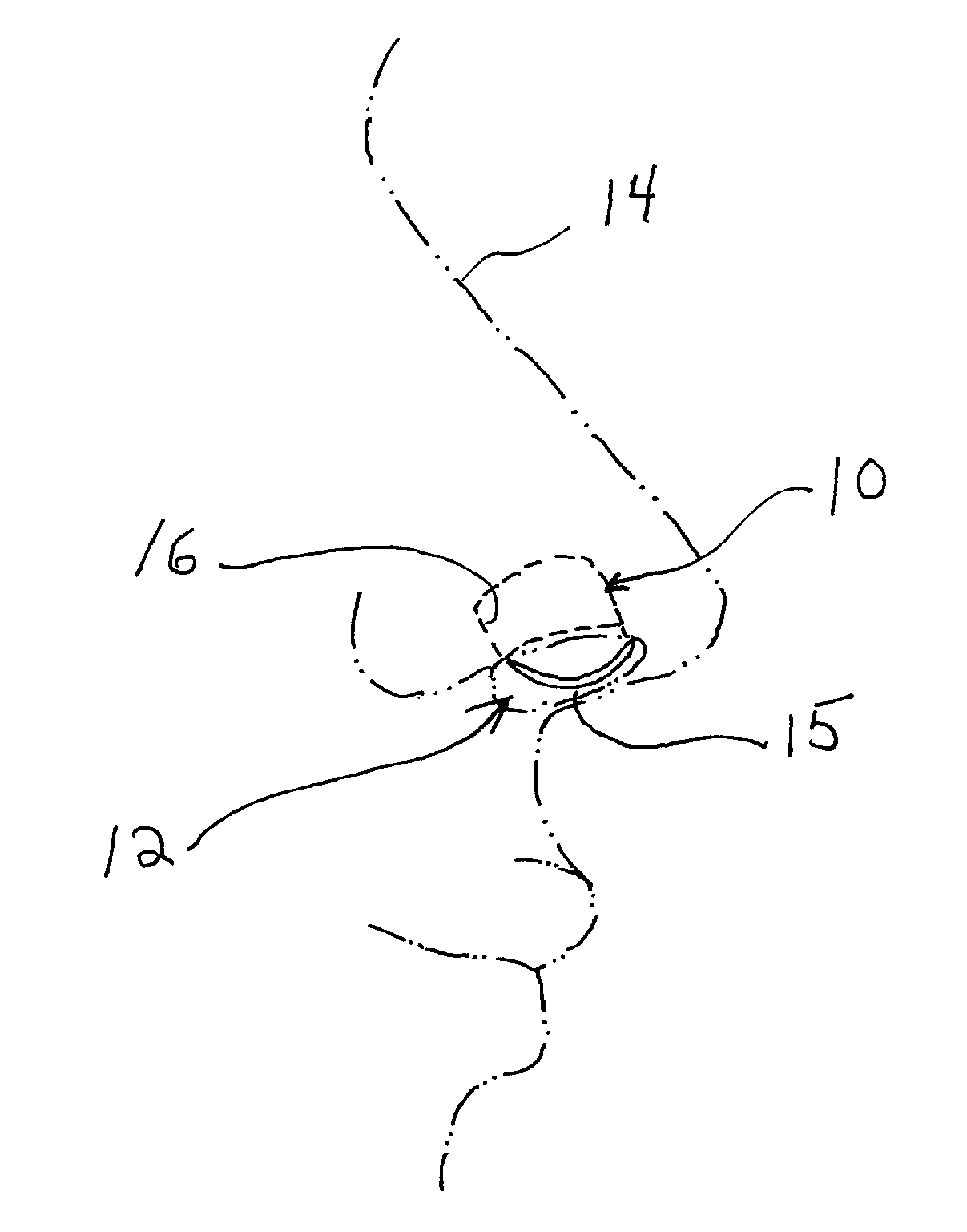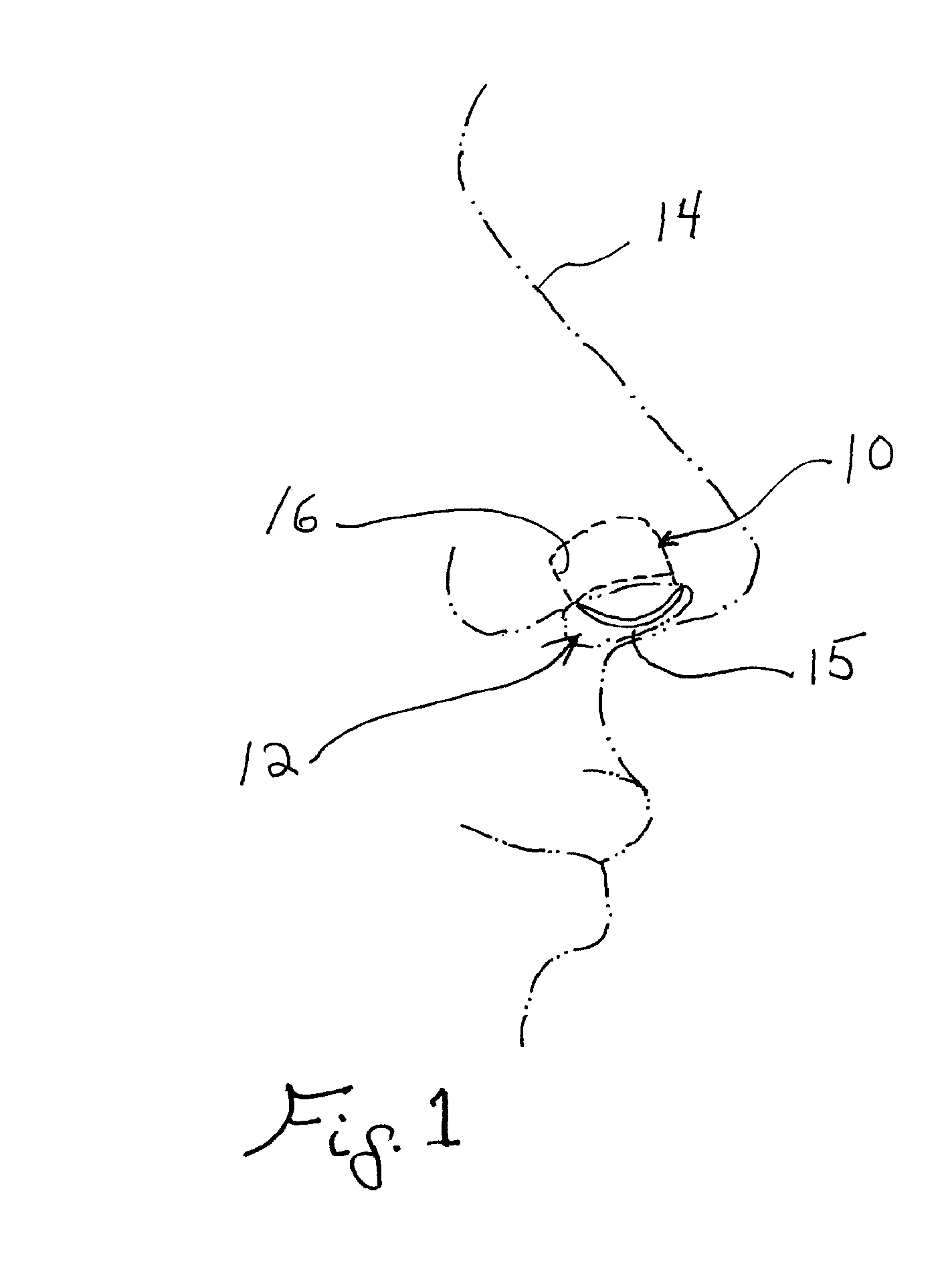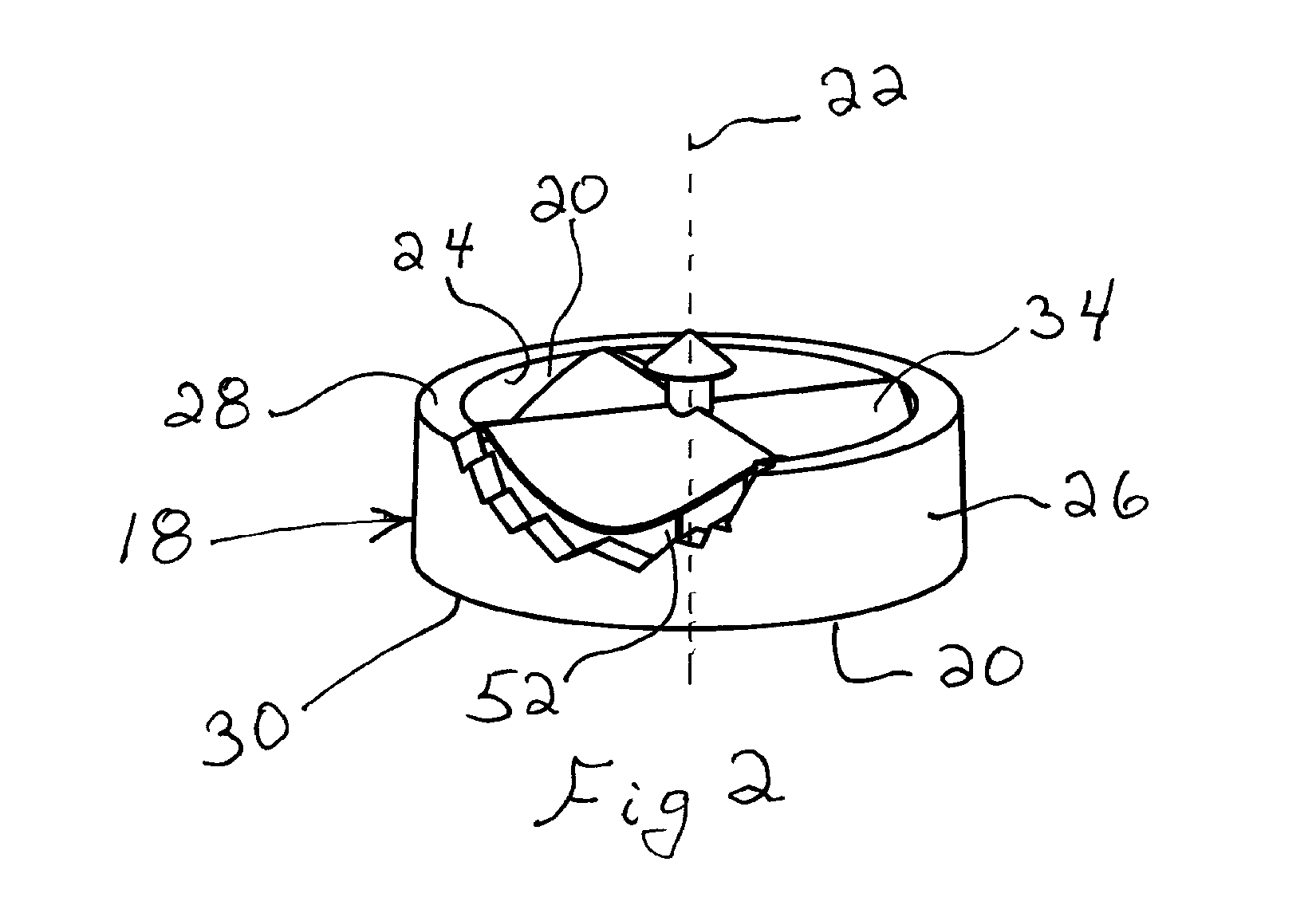Nasal cannula
a nasal cannula and valve technology, applied in the field of valved nasal cannula, can solve the problems of excessive daytime sleepiness, repetitive episodes of inordinately loud snoring, and significant morbidity in the respiratory system, and achieve the effects of reducing the risk of injury, reducing the breathing of sleep disorders, and increasing strength
- Summary
- Abstract
- Description
- Claims
- Application Information
AI Technical Summary
Benefits of technology
Problems solved by technology
Method used
Image
Examples
Embodiment Construction
[0050]Referring to FIG. 1 there is shown a valved nasal cannula in accordance with an embodiment of the present invention generally indicated by the reference numeral 10. The nasal cannula 10 is shown inserted in the nostril 12 of an intended user 14 substantially in register with the nasal vestibule 16 of the intended user 14.
[0051]The valved nasal cannula 10 is insertable in the nose of the intended user 14 and. usable to selectively restrict a flow of air flowing through the valved nasal cannula 10. The nostril 12 defines a nostril inlet 15 and a nostril vestibule, part of the nasal vestibule 16, the nostril vestibule extending inwardly into the nose from the nostril inlet 15.
[0052]As illustrated more specifically in FIG. 2, the nasal cannula 10 has a cannula body generally indicated by the reference numeral 18, The cannula body 18 defines a cannula passageway 20 extending therethrough along a passageway longitudinal axis 22.
[0053]The cannula body 18 also defines a body inner sur...
PUM
 Login to View More
Login to View More Abstract
Description
Claims
Application Information
 Login to View More
Login to View More - R&D
- Intellectual Property
- Life Sciences
- Materials
- Tech Scout
- Unparalleled Data Quality
- Higher Quality Content
- 60% Fewer Hallucinations
Browse by: Latest US Patents, China's latest patents, Technical Efficacy Thesaurus, Application Domain, Technology Topic, Popular Technical Reports.
© 2025 PatSnap. All rights reserved.Legal|Privacy policy|Modern Slavery Act Transparency Statement|Sitemap|About US| Contact US: help@patsnap.com



